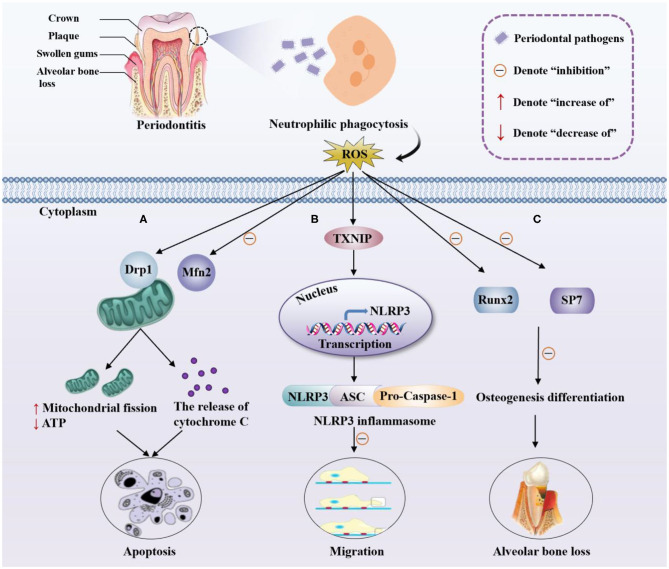Figure 1.
Pathomechanism of periodontitis and ROS. Pathogens in dental plaque trigger the recruitment and activation of neutrophils, producing a large amount of ROS through phagocytosis. (A) ROS promote mitochondrial fission via the upregulation of Drp1 and downregulation of Mfn2 which is a mitochondrial fusion protein, reduce the production of ATP, and increase the release of cytochrome C, inducing the apoptosis of PDLSCs. (B) ROS trigger the combination of TXNIP and NLRP3, leading to the upregulation of the transcription of NLRP3, thereby activating the NLRP3 inflammasome and ultimately inhibiting the migration of PDLFs. (C) ROS inhibits the expression of osteogenic markers Runx2 and SP7, inhibiting the osteogenic differentiation of periodontal membrane stem cells, which cause alveolar bone loss.

